“I think that audiences today expect art to shock them,” commented dancer/choreographer Hillel Kogan, “people want to be shaken up, and experience extreme emotions. We glorify innovation, originality, surprise. Today’s audiences feel that they have seen it all and know everything. They want to see something new each day. If you shock them, they will simply take pleasure in the feeling. What could possibly shock anyone today? After the artists of Dada fomented the greatest revolution possible in the art world, what remains to be overthrown?”
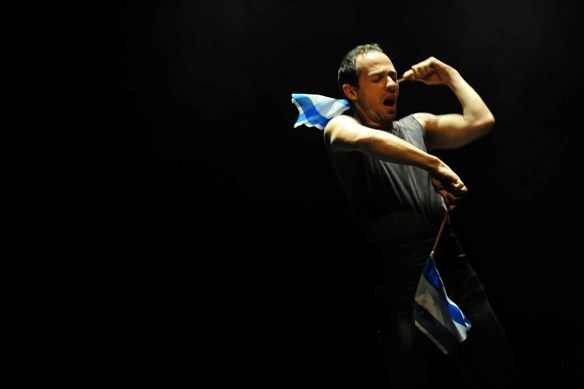
The ultimate jester/philosopher in the courtyard, Hillel Kogan is a fascinating performer and creative artist, whose works are provocative and entertaining. Hillel succeeds in being hilariously funny, and deeply moving, all the while offering a pointed critique on contemporary culture. He will be presenting two works in the context of Tel Aviv Dance at the Suzanne Dellal Centre on May 10th: Rite of Spring, referencing and quoting from a dance which in its original choreography by Nijinsky, to a score by Stravinsky, shocked and appalled audiences at its premiere in May 1913; and Obscene Gesture. Hillel shared his thoughts on dance – and its maladies – in an interview with Midnight East.
“Rite of Spring and Obscene Gesture are connected in the way that they relate to, and discuss dance and composition,” Hillel explained, “but in Obscene Gesture dance is the topic, and in Rite of Spring it is just a means of expression.”
Both works “quote” from other choreographers, in other words, they contain movements and gestures that can be recognized as coming from dances by well known choreographers. In Rite of Spring, these quotes are from the history of the work itself, which has many versions, from Nijinsky’s original choreography, to Maurice Bejart and Pina Bausch; traces of these may be discerned in Hillel Kogan’s work, which creates its own context, images, and emotional terrain. Hillel describes it as “a work that is fragmented, composed of separate scenes with characters. I am alone, but there are all sorts of characters: dancer, soldier, a bereaved mother, bride, faun, belly dancer, and boxer.”
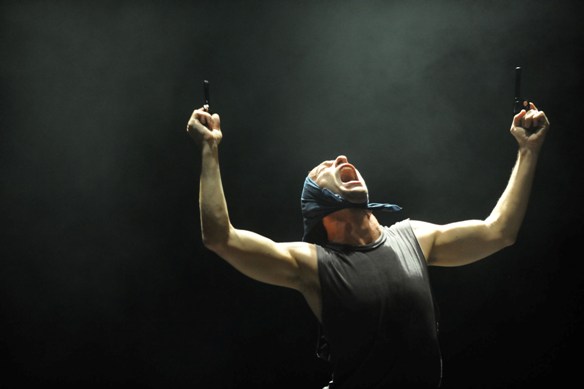
While many of the quotations from dance history may be obscure to the uninitiated, those from Pina Bausch are likely to be more familiar and easy to identify, due in part to Wim Wenders 3D documentary film Pina. As Hillel commented, “Pina shaped the language of dance theatre, influencing the way one relates to the stage and images, to the extent that she has become a cliché. It’s an inevitable cycle, with all its positive and negative implications, and then it is very easy to relate to it, because it is readily identifiable. I enjoy the fact that I point to things that people can identify, especially in Obscene Gesture because there I am making fun of the maladies of contemporary dance.”
What are the maladies of contemporary dance?
According to Hillel, there are many intriguing issues to explore: work processes in the studio, relationships between choreographer and dancers, the lack of communication with the audience, and the tricky issue of audiences who have not seen much contemporary dance and are not familiar with the history of dance.
Watching a contemporary dance performance, Hillel noted that the audience can sometimes feel “confused and bewildered.” He went on to say, “I don’t think there are choreographers who don’t understand themselves, but sometimes they are talking to themselves…which is fine and legitimate, but it’s like a private language.”
“Who is responsible for the ignorance of the audience?” asks Hillel (who has an article on this subject in forthcoming issue of Maakaf), “Do I need to teach the audience the language of dance? Can’t I continue from the place where my predecessors left off? If I want to do something abstract and the audience is not proficient in it, do I need to teach the abstract from the beginning?”
“I don’t have the answers to these questions,” said Hillel, “there is ignorance (regarding dance) in the audience and it must be responded to, it must be recognized. There is also the close-mindedness of the choreographer, dance is a world closed within itself. That must be recognized as well, with its implications and repercussions, and one must decide whether or not that is desirable.”
Hillel poses the question: How important is it to you to make yourselves clear? “An artist might be unaware that he is communicating with himself,” said Hillel, “or perhaps he is simply not interested in being understood. It’s OK if the audience understands different things. I even think that some people enjoy the fact that they don’t understand. They feel that they are in on some secret, something that traditionally belongs to the elite, to the avant- garde, and they can feel part of it: I consume high culture, not mass culture.”
Obscene Gesture
“I don’t have a philosophy,” said Hillel, “Obscene Gesture originates in my pleasure in caustic humor. I want to make myself laugh. After 20 years in the dance world shining a spotlight on the ridiculous is my way of staying alert and alive in this closed and strange world.”
“Dance can be very boring and superficial,” said Hillel, “sometimes it is not intellectually stimulating. It can focus too much on the body and beauty, which can be frustrating. There is a traditional connection between dance and beauty and between dance and youth. What does this imply for someone who wants to continue dancing? It can result in frustration or superficiality.”
“Beauty is many things, not one thing. You can interpret it in many ways. So in dance one must look for something that is “not beauty” not the opposite of beauty, but to look for those other things that dance has to offer.”
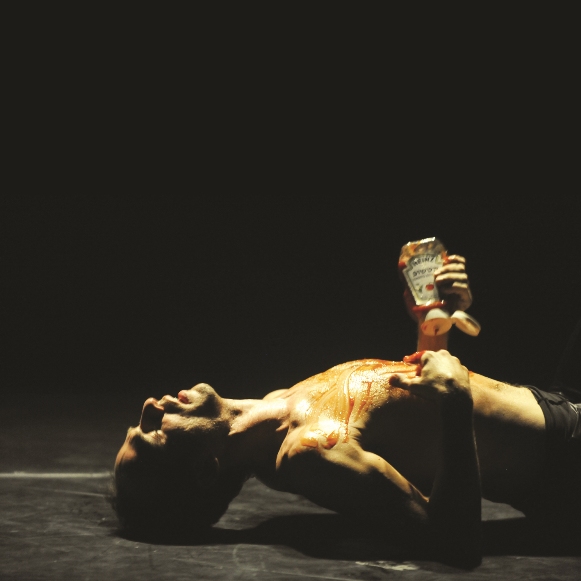
The Maladies of Dance
In addition to what one might call the ‘privileged’ language of dance, that feels at times inaccessible to the uninitiated, there are further issues that Hillel takes up in Obscene Gesture.
In observing contemporary dance, Hillel said, “I start to identify mannerisms instead of content. For example: what is unison (there is room for interpretation, but the basic meaning is: performers doing the same thing at the same time)? What is its role?”
“It’s something that the audience understands, and it responds to a connection between composition and beauty. There is something very simple about it because there is an organization that is very clear to the eye, and we interpret it as “beautiful” because most of our culture and classical art is based on unison, even buildings and streets are unison. Yet seeing it in performance, I almost never feel its meaning. I think that perhaps there is a hidden function, it says: OK, we are in the dance world.”
Hillel explained that in the context of an abstract dance work, a section of unison creates a “comfort zone,” as if to say: “we haven’t left everything behind.”
“Working with clichés, the ‘symptoms’ of the dance world,” he said, “you can make long lists of recurring motifs: a suitcase on a stage; unison; in terms of the physical language there’s rubbing, contortions; cutting off limbs, cutting, sawing, writing in the air, marking territory space, lack of communication, a dialogue without dialogue, fragmentation, laughter that comes out of nowhere… you see, you’re rolling your eyes. You get it?”
“It is not a statement about the quality of the work,” Hillel elaborated, “Through working on these themes, you understand that you can’t really escape it because it has become a language and yes, you can enjoy it but there is also something disturbing. What does it mean? Does it mean that a choreographer always has to invent the wheel?”
“It’s very problematic and there aren’t any answers. I don’t think that you need to close up shop and start over. I enjoy… like on Eretz Nehederet, I enjoy making fun of all that’s serious. I have complicity with the audience I say: OK, you can raise an eyebrow. You’re right.”
“I am not creating dance for an ‘elite and experienced’ audience. I feel responsible. It is very important to me to be understood, because I am telling a joke, and I want people to understand it.”
Mozart or Umm Kulthum?
Obscene Gesture, Hillel’s take on the maladies of dance, is a pleasure to watch, deliciously aesthetic and hilariously funny. Yet Hillel is very serious about his jokes, his is a humor that emerges from a wider vision of culture and society. Where there is a gap between the cutting edge of contemporary dance and the audience’s understanding, Hillel does not accuse the audience.
“The responsibility for knowledge is on the culture,” said Hillel, “and culture is determined from above. If you want people to understand classical music then you should expose them to classical music. It’s a policy of the society effected through politics. I believe in education.”
“If you leave everything up to the individual, then you preserve class distinctions and hierarchy. Usually, what you see at home is what becomes your taste, taste is something that is acquired, so it is perpetuated (unless you receive other input).”
“Is it right that an educational system force students to study certain subjects? Should it be Mozart or Umm Kulthum as part of the process of acquiring taste? What should society impose? Mozart – yes, and Umm Kulthum – no? We’re in the Middle East!”
“These are also questions we need to answer, but we evade them rather than answer them. There was a very patronizing attitude here in the past and culturally, we tend to be super-Western. A Russian is considered a cultured person because he grew up on Tolstoy and the Bolshoi Ballet, Kandinsky and Tchaikovsky, but what Iraqi or Moroccan writer do you know? Not Israeli Moroccan … what do they teach in schools? Everyone needs to read Dostoevsky but why not Najib Mahfouz?

Answers, anyone?
Attracting a wider audience and educating audiences to understand and enjoy dance is crucial, ultimately, it is the audience that determines an artist’s survival. Hillel further noted the difficulty of engaging audiences, in that it is not “obvious” that people can and will connect with dance with the same immediacy that they connect to music and theatre. Amid the plethora of obstacles, maladies and critical questions, are there any answers?
“I think that asking the questions is the answer,” said Hillel, “look, laugh at something together with the audience. I feel that it is both question and answer, but it’s not a closed answer. The answer is: pay attention, open your eyes, don’t hurry to enjoy, and to praise. Ask yourself: why did this thing move me? What makes this beautiful? When you see dance and say: Wow, that’s beautiful! When you say that something is beautiful, what then are you labeling as ugly? What are you excluding from your definition of beautiful? That is my answer.”
Rite of Spring/Obscene Gesture will be performed on Friday, May 10, 2013 at 22:00 in the Yerushalmy Hall at Suzanne Dellal. Tickets are 95 NIS, and may be ordered online, or call: 03-5105656.

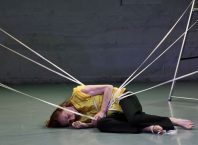
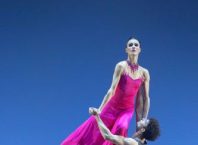


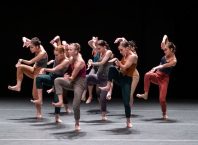
[…] night will feature a special two-part program. Opening the festivities will be the ultimate jester/philosopher in the courtyard Hillel Kogan‘s “Rite of Spring,” a theatrical dance performance with an intimate relationship […]
Comments are closed.